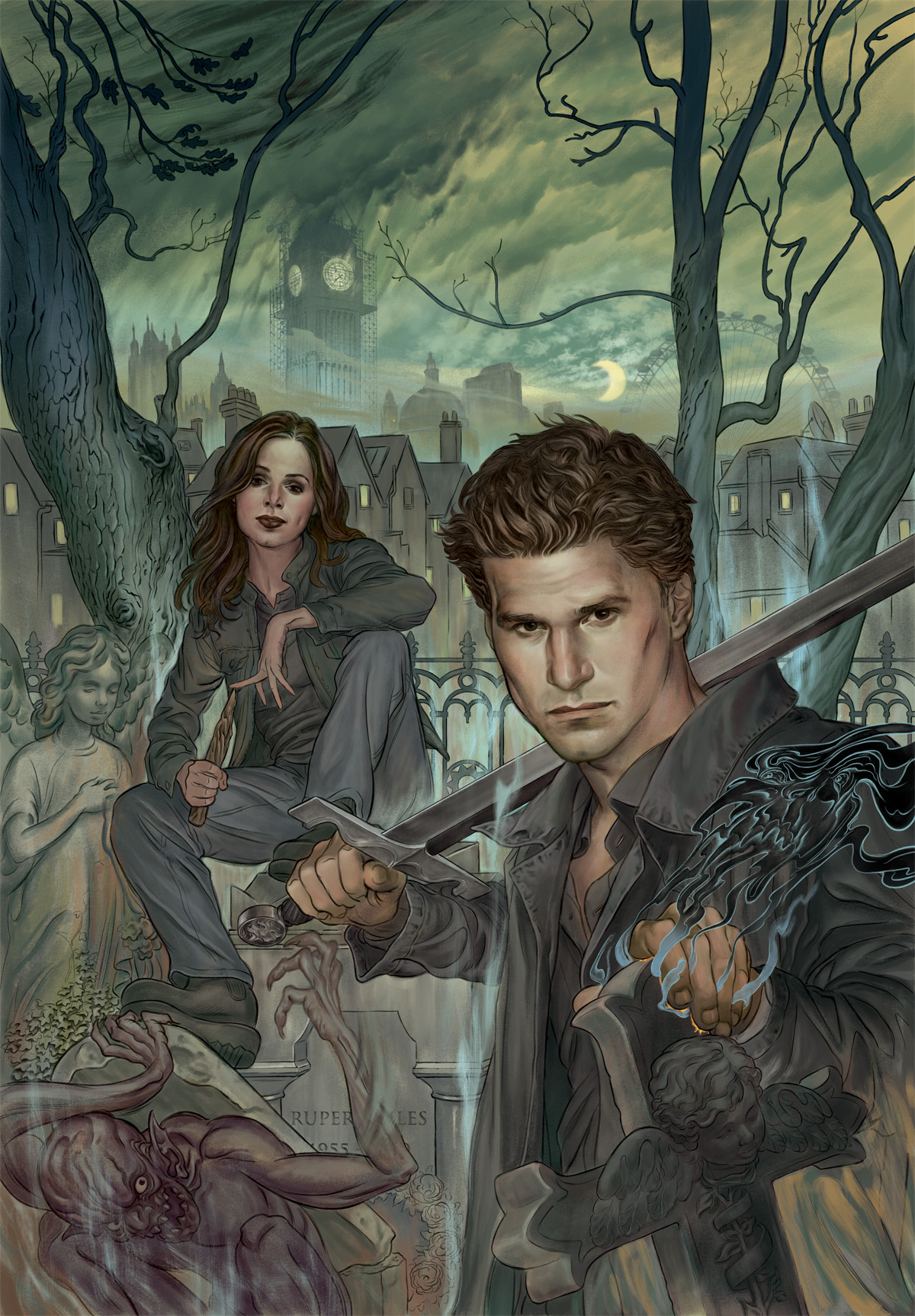Steve Morris, creator of Blessed Thistle and Artist for some special art Dark Horse will be revealing at San Diego Comic-Con, took time out of his busy schedule to share his cover process for the cover of Angel & Faith #1.
SKETCH
I start by finding out as much specific info as I can about the issue. In the case of Angel & Faith #1, the only particulars given were Angel and Faith in London (with a partially reconstructed Big Ben). When developing ideas, I don't really consider what I should or shouldn't do or what is too over the top; I just free the ponies of my imagination and keep my fingers crossed…Thankfully both Dark Horse and Joss have been very open to even my strangest ideas, LOL.
As I conceptualize, I incorporate themes, metaphors, symbols, and any narrative bits that I can infuse into the art to push it beyond a strict representation of characters and plot. This push opens up the visual playing field and hopefully creates a cover that makes people curious and keeps their eye lingering.
Once I've mulled over ideas, I begin sketching in Photoshop. I keep my sketches loose and fluid so I'm more apt to experiment and not get attached to a minor detail that I spent time drawing. I don't worry about likenesses at this stage, but rather try to convey the general mood of the characters. However, since this was issue #1, I spent more time on the rendering.
PENCILS
The penciled line art is a pretty straightforward process of drawing the pencils (on multiple layers) above the sketch, which has been compressed into a single Photoshop layer. If the image has action, I may use looser lines, but for this cover I kept them tight. I'll usually use two or three (sometimes more) images of the actors to triangulate the likenesses, because the angle I need isn't always available in the images I can find. Once the lines are finished, I shade minimally, focusing on the faces, as it helps me tell if the likenesses are pulling together.
At the time I finished the pencils for this cover, the Buffy Season 8 finale was approaching release, and DH suggested that Giles's name be added to the tombstone on which Faith was sitting…so after processing that surprise about Giles, I edited the stone, and waited for approval.
COLORS
In a new file, with mostly compressed layers of line art, I'll flat colors for the main figures and then drop a neutral color into the background. I've made several custom brushes for coloring, but stick mainly to just two. I usually have a color scheme in mind from the time of the sketch; here, I knew I wanted a greenish tint and a moody sky.
My coloring process proceeds much like traditional painting, as I roughly underpaint and then gradually tighten the rendering. While coloring I may tweak the line art by shortening a limb, tilting a head, etc.; it's the plus side of a purely digital process. As I get closer to finishing, I'll add Photoshop layers over the line art and color over parts of it. The extent of overpainting varies from cover to cover, but I always do some level of overpainting on faces, to soften them up. With a little final polishing I send it off to DH for approval and final edits. The final edit on this cover was to warm up Angel’s and Faith's skin tones, as DH felt they were too green.
So that's it. The entire process (sketch to color approval) takes about four to seven days depending on the level of detail and my workload. Thanks for taking a look and reading about my creative process.


